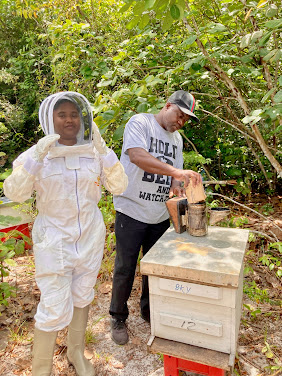Two Fun Guys Inspect Guatemala's Fungi
Oyster
mushrooms, so called that for their odd resemblance in sight, taste, and smell
to the seafood, and other specialty mushrooms have been increasingly in
demand. In Central Guatemala, Asociación
Visión Maya, or the Maya Vision Association has been successfully producing
these mushrooms for ten years, but asked Farmer-to-Farmer to help them develop
their skills and create recommendations for better practices.
 |
| Participants testing, preparing, and inoculating spawn |
Without the proper supplies,
Guatemala’s mushroom farmers have been industrious and inventive in their
efforts- for example, without petri dishes readily available, they use old baby
food jars instead. Maya Vision
Association farmers have been growing oyster mushrooms fairly successfully for
the past ten years; however, their production has been hindered by the lack of technical skills and knowledge necessary to maintain appropriate growing
conditions, as well as the undependable availability of high-quality mushroom
spawn (the material used to carry the vegetative part of the fungus, called the
mycelium, so that the mushroom can be transported and stored). Drs. Cotter and Hameed set up experiments to test
various ways to improve yields, and taught what methods and what facilities are
necessary in order to produce spawn. They also visited the growers' production houses
in order to give feedback for general improvements and the reduction of
losses due to contamination and poor environmental conditions. Over the course of the week, their
participants successfully prepared and inoculated spawn in three different
varieties, enough to start their own strain library, which will remove their
dependence on external sources of spawn.
 |
| Training participant with his mushrooms |

.png)

Comments
Post a Comment